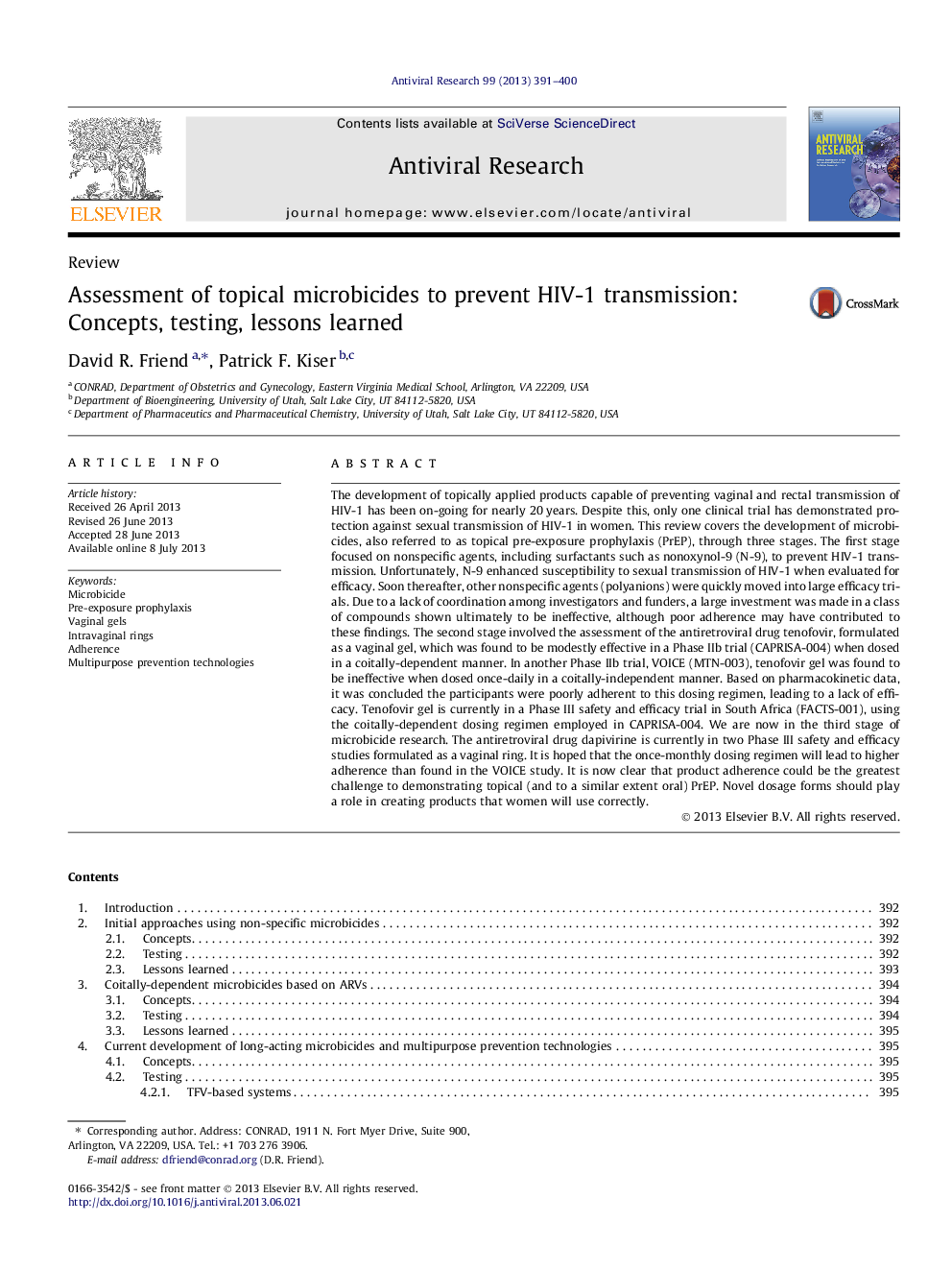| Article ID | Journal | Published Year | Pages | File Type |
|---|---|---|---|---|
| 2510076 | Antiviral Research | 2013 | 10 Pages |
•Development of topical microbicides for the prevention of HIV-1 transmission has proven challenging.•We analyze the development of this field over the past 20 years.•We evaluate the limited success and failures in microbicide development and assess lessons learned.•The future of microbicide development is discussed in light of its history.
The development of topically applied products capable of preventing vaginal and rectal transmission of HIV-1 has been on-going for nearly 20 years. Despite this, only one clinical trial has demonstrated protection against sexual transmission of HIV-1 in women. This review covers the development of microbicides, also referred to as topical pre-exposure prophylaxis (PrEP), through three stages. The first stage focused on nonspecific agents, including surfactants such as nonoxynol-9 (N-9), to prevent HIV-1 transmission. Unfortunately, N-9 enhanced susceptibility to sexual transmission of HIV-1 when evaluated for efficacy. Soon thereafter, other nonspecific agents (polyanions) were quickly moved into large efficacy trials. Due to a lack of coordination among investigators and funders, a large investment was made in a class of compounds shown ultimately to be ineffective, although poor adherence may have contributed to these findings. The second stage involved the assessment of the antiretroviral drug tenofovir, formulated as a vaginal gel, which was found to be modestly effective in a Phase IIb trial (CAPRISA-004) when dosed in a coitally-dependent manner. In another Phase IIb trial, VOICE (MTN-003), tenofovir gel was found to be ineffective when dosed once-daily in a coitally-independent manner. Based on pharmacokinetic data, it was concluded the participants were poorly adherent to this dosing regimen, leading to a lack of efficacy. Tenofovir gel is currently in a Phase III safety and efficacy trial in South Africa (FACTS-001), using the coitally-dependent dosing regimen employed in CAPRISA-004. We are now in the third stage of microbicide research. The antiretroviral drug dapivirine is currently in two Phase III safety and efficacy studies formulated as a vaginal ring. It is hoped that the once-monthly dosing regimen will lead to higher adherence than found in the VOICE study. It is now clear that product adherence could be the greatest challenge to demonstrating topical (and to a similar extent oral) PrEP. Novel dosage forms should play a role in creating products that women will use correctly.
